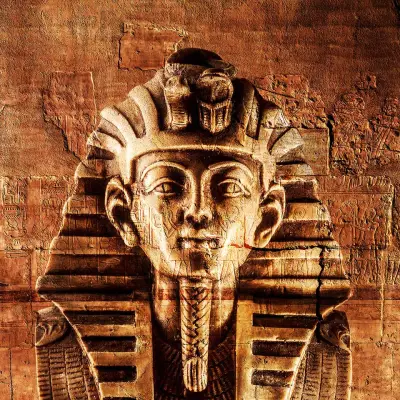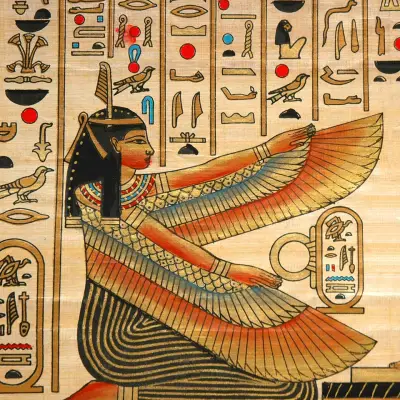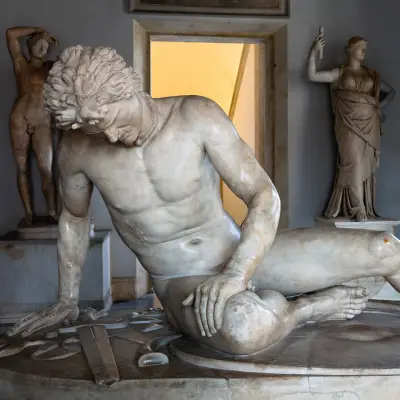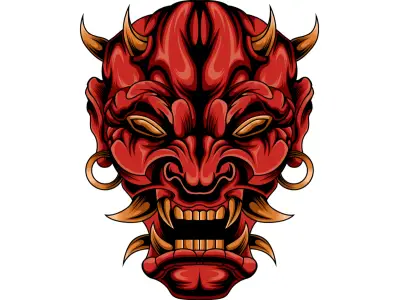The tale of Narcissus is an enduring myth that explores timeless themes that remain relevant even today—self-love, hubris, and the consequences of obsession. Curious to find out more? This blog post explores Narcissus in Greek Mythology, uncovering the myths, powers, and symbols that define his story.
Jump to:
Recommended for you!
Best SellersWho Was Narcissus?
Narcissus was a strikingly handsome figure in Greek mythology, known for his extraordinary beauty. The son of the river god Cephissus and the nymph Liriope, Narcissus was celebrated throughout the land, admired by mortals and immortals alike. However, his beauty came with a price: a personality marred by arrogance and disdain for others.
From a young age, Narcissus rejected those who adored him, spurning the affections of countless suitors. His contempt for others’ love and his inability to see beyond his own reflection made him both admired and despised. His tale has since become a symbol of excessive self-love and its consequences.
Narcissus' Myths

Narcissus' story is told through several myths, each highlighting different aspects of his character and his ultimate fate. Here are three of the most well-known myths involving Narcissus.
The Story of Narcissus and Echo
One of the most famous tales of Narcissus is recounted in Ovid’s Metamorphoses. Narcissus wandered through the forest and caught the attention of Echo, a nymph cursed by Hera to only repeat the words of others. Despite Echo’s love for him, Narcissus cruelly rejected her, leaving her heartbroken. Overwhelmed by sorrow, Echo faded away until only her voice remained, echoing in the mountains.
Nemesis, the goddess of retribution, decided to punish Narcissus for his arrogance. She led him to a clear pool where he saw his own reflection for the first time. Enchanted by his image, Narcissus became consumed by his own beauty. Some versions of the myth claim he wasted away gazing at himself, while others suggest he drowned attempting to embrace his reflection. Upon his death, the gods transformed him into a narcissus flower, symbolising vanity and fleeting beauty.
The Curse of Narcissus
Another myth speaks of a prophecy foretold by the seer Tiresias, who declared that Narcissus would live a long life “as long as he does not know himself.” This prophecy came to fruition when Narcissus encountered his reflection. His growing obsession with his image represented a form of self-awareness that crossed into self-destructive vanity.
Tiresias’ words highlight the fine line between healthy introspection and excessive self-obsession. Narcissus’ inability to heed this warning ultimately led to his tragic end, serving as a cautionary tale about the dangers of unchecked pride.
Narcissus and the Lake’s Tears
A lesser-known myth tells of how the lake in which Narcissus saw his reflection mourned his death. The water, once still and pure, lamented the loss of Narcissus, whose beauty had graced its surface. The gods, moved by the lake’s sorrow, ensured that the narcissus flower would bloom by its edge, immortalising the youth who captivated all—even the natural world.
This version of the myth deepens the symbolism of Narcissus’ story, portraying him as a figure who left a lasting impression on everything he touched, even after his demise.
What Powers Did Narcissus Possess?
While Narcissus was not an Olympian god and lacked supernatural abilities, his power lay in his extraordinary allure. His beauty was so compelling that it bewitched all who encountered him. This natural magnetism, however, was also his greatest weakness, as it blinded him to the feelings of others and, ultimately, to the dangers of his own obsession.
Narcissus’ story can also be viewed symbolically, with his “power” representing the hold that vanity and self-absorption can have over a person. His tale serves as a cautionary reminder of the perils of unchecked ego and self-love.
Symbols Associated with Narcissus
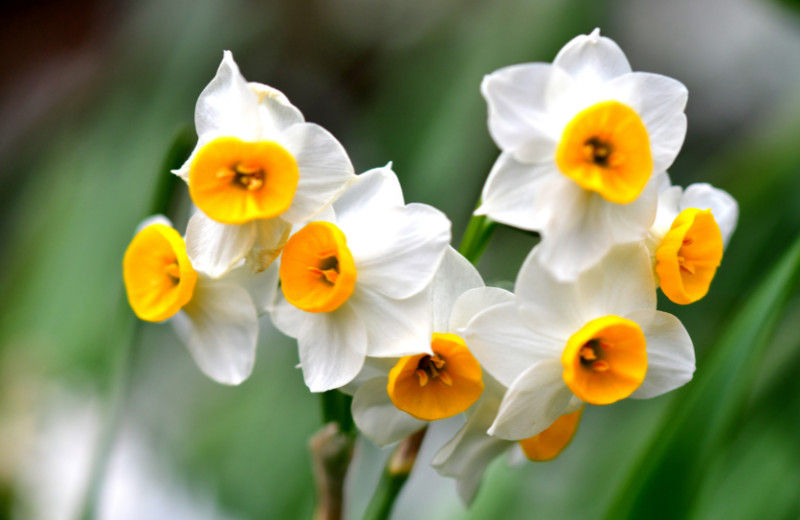
The symbols connected to Narcissus are rich in meaning, encapsulating the themes of his myth and the lessons it imparts.
- The Narcissus Flower: Perhaps the most enduring symbol, the narcissus flower—commonly known as the daffodil—is closely tied to the myth. Representing beauty, renewal, and the fleeting nature of life, the flower also carries connotations of vanity and self-focus. Its emergence in the spring further reflects cycles of life, death, and rebirth.
- Water and Reflection: Water plays an important role in Narcissus’ tale. The still pool where he became entranced by his own reflection symbolises self-awareness and the dangers of obsession. It represents the fine line between healthy introspection and excessive self-focus, serving as a metaphor for how reflection, when taken to extremes, can be destructive.
- Artistic Depictions: Narcissus has been a source of inspiration for countless artists over the centuries. One of the most famous depictions is Caravaggio’s painting, where Narcissus is shown gazing intently at his reflection. This image encapsulates the essence of his story—a relentless focus on oneself to the exclusion of all else.
Why Is Narcissus Special?
Narcissus’ story has transcended time because it speaks to universal human experiences. His tale explores the dangers of excessive pride and the importance of empathy and connection. The myth serves as a mirror, prompting us to reflect on our own behaviour and relationships.
In modern psychology, the term “narcissism” originates from this myth, describing a personality trait marked by an inflated sense of self-importance and a lack of empathy. This link between the ancient story and contemporary understanding highlights the enduring relevance of Narcissus’ tale.
Narcissus in Modern Culture
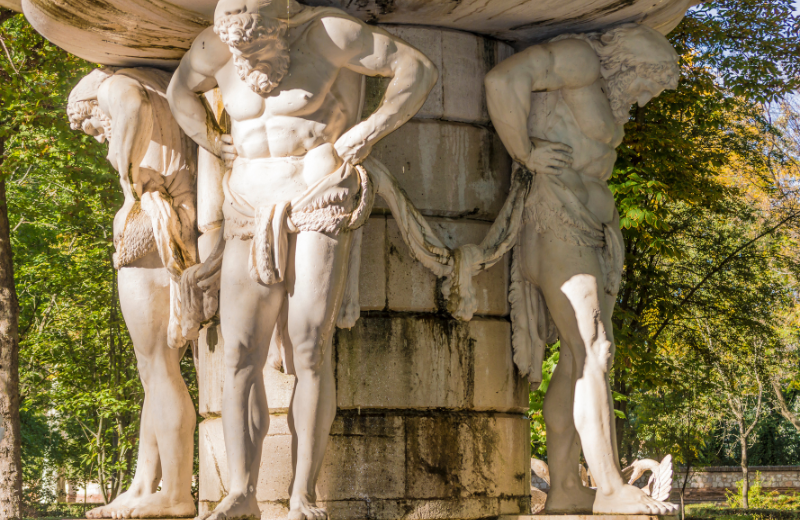
Narcissus' legacy extends far beyond ancient Greek mythology, continuing to inspire art, literature, and philosophical thought. His story resonates because of its timeless exploration of self-perception, beauty, and the consequences of unchecked vanity.
Narcissus in Art and Literature
Narcissus has been a muse for countless artists and writers throughout history. Caravaggio’s famous painting captures the haunting essence of his myth, depicting the moment he becomes captivated by his own reflection. In literature, Narcissus serves as a powerful symbol of self-absorption and human fragility, appearing in works ranging from classical poetry to modern novels. His story’s universal themes ensure its continued relevance in creative expression.
Narcissus as a Cultural Metaphor
In contemporary culture, Narcissus’ tale is often used as a metaphor for societal trends, particularly the rise of social media and the increasing focus on self-image. The term “narcissist” has become a part of everyday language, describing traits of self-centredness and an inflated sense of self-importance. Narcissus serves as a cautionary figure, reminding us of the dangers of becoming overly fixated on our own reflections—whether in a literal or digital sense.
Recommended for you!
Best SellersFrequently Asked Questions about Narcissus
What did Aphrodite do to Narcissus?
Aphrodite does not directly feature in the most famous versions of Narcissus’ myth. However, some lesser-known accounts suggest that she played a role in cursing him or aiding Nemesis in seeking justice for those he had wronged. In these variations, Aphrodite’s involvement ties into her domain over love and beauty, symbolising the consequences of misusing these gifts.
What were Narcissus’s last words?
In certain versions of the myth, Narcissus is said to utter, “Farewell, my reflection,” as he succumbs to his obsession. These poignant words emphasise the tragedy of his self-infatuation and highlight the moral of his story—an overindulgence in one’s own image can lead to ruin.
What was Narcissus’s fatal flaw?
Narcissus’s fatal flaw was his hubris and excessive pride. His inability to empathise with others and his disdain for their feelings left him isolated and vulnerable to his downfall. His obsession with his own reflection ultimately consumed him, demonstrating how unchecked ego can lead to destruction.
What was Narcissus’s sin?
The “sin” of Narcissus lies in his lack of compassion and his rejection of love from others. By spurning Echo and countless other admirers, Narcissus displayed arrogance and cruelty, which the gods deemed punishable. His self-centred behaviour serves as a warning against neglecting the needs and emotions of those around you.
Why did the lake cry for Narcissus?
In one version of the story, the lake mourned Narcissus after his death because it had been captivated by his beauty, just as he was by his reflection. The lake’s tears symbolise the universal nature of admiration and loss, showing that even nature grieved the youth’s untimely end.
Why did Narcissus not recognise his reflection as himself?
Narcissus was unfamiliar with the concept of reflection, as mirrors and similar tools were not part of ancient life. Seeing his image in the pool, he believed it to be another person. This lack of understanding made his obsession all the more tragic, as he longed for something he could never truly possess.
Why is the narcissus flower associated with death?
The narcissus flower, or daffodil, is often linked to death and the afterlife in ancient Greek culture due to its connection to Narcissus’s myth. The flower’s emergence after his death symbolises the transformation of life into something new, bridging the gap between mortality and immortality. It is also associated with Hades and Persephone, further reinforcing its link to the underworld.
What was Nemesis’s role in Narcissus’s downfall?
Nemesis, the goddess of retribution, played a role in Narcissus’s fate. She punished him for his arrogance and lack of compassion by leading him to the pool where he fell in love with his reflection. Nemesis’s actions underline the theme of justice and balance in Greek mythology, reminding us that hubris often invites divine intervention.
Why is the myth of Narcissus still relevant today?
The myth of Narcissus remains relevant because it explores universal human themes such as self-perception, vanity, and the importance of empathy. In modern times, it serves as a metaphor for societal issues like the rise of narcissistic behaviour, especially in the age of social media. Narcissus’s story encourages self-reflection and balance in how we view ourselves and relate to others.
Study Greek Mythology for £29
Narcissus’ myths offer a glimpse into the fascinating complexities of Greek mythology. If you’re captivated by these ancient stories and their modern interpretations, deepen your understanding with our Greek Mythology Diploma Course at Centre of Excellence. This fascinating course offers an in-depth exploration of the myths, legends, and cultural significance of ancient Greece. By enrolling today, you can enjoy a discounted price of just £29.
